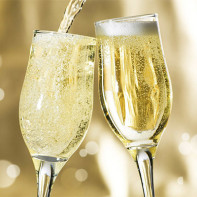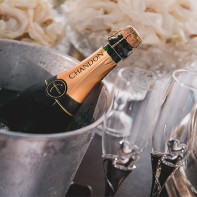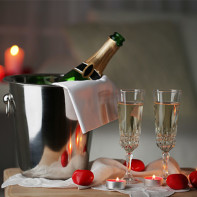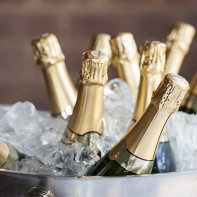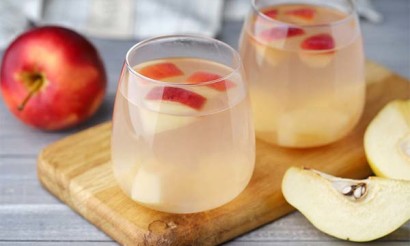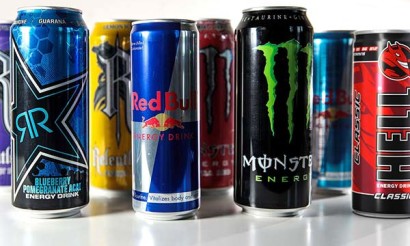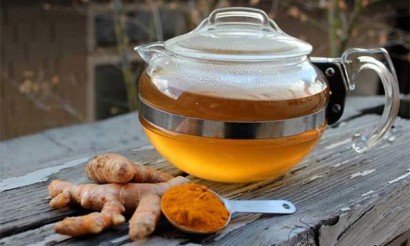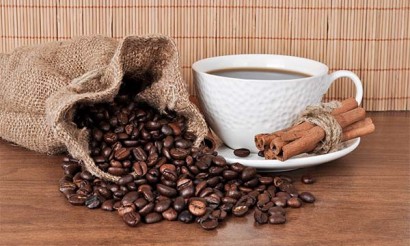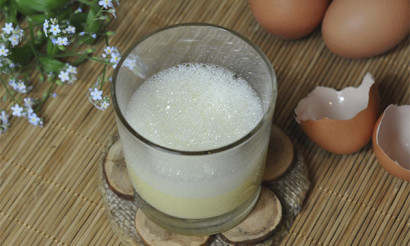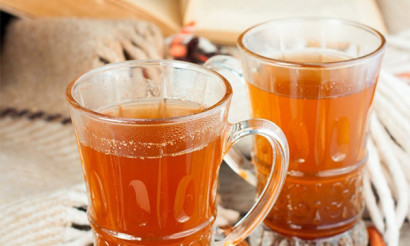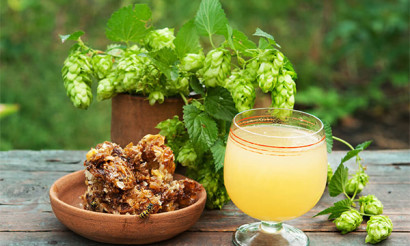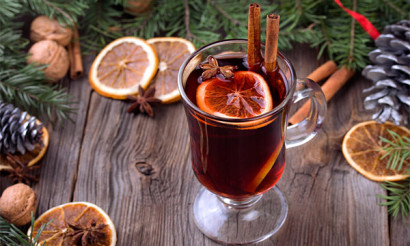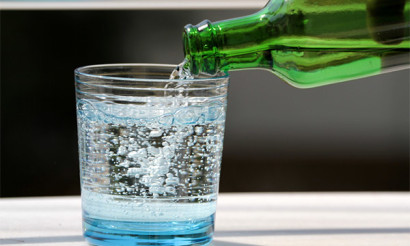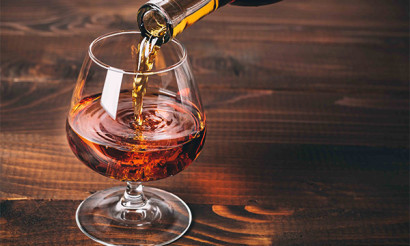Champagne: useful properties and contraindications
Every festive event - whether it is a romantic date, folk festivities, opening ceremonies or victories and celebrations - is accompanied by sparkling wine, which cheers up and fills all those present with sparks of joy. But is there a benefit from the wine drink or does it bring harm to the body? Who can drink champagne and how to do it correctly - let's consider further.
- Types of champagne
- What is the difference between champagne and sparkling wine
- Composition and Calories
- Benefits of Champagne
- For Women
- For Men
- Pregnancy
- Breastfeeding
- For Children
- Can I Drink Champagne to Lose Weight?
- Champagne in Medicine
- Diabetes mellitus
- Pancreatitis
- Gastritis
- At gout
- Cholecystitis
- Champagne in cosmetology
- Harm and Contraindications
- How to choose and store champagne
- What to do if champagne is frozen in the freezer.
- How to open champagne if the cork is broken
- How to make champagne from birch sap
- How to drink champagne properly
- Can I drink every day?
- What to drink champagne with?
- Should you drink champagne after beer and wine?
- Best Champagne: Rating
- Interesting facts about champagne
Types of champagne
Sparkling wine, prepared according to special recipes, are distinguished by strength and sweetness, as well as depending on the type of grapes from which the product is made. Champagne comes in white and rosé, sweet, semi-sweet, and dry.
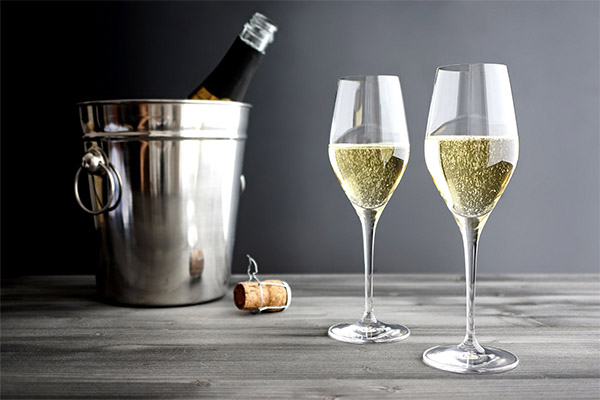
Quality champagne is made from good varietal grapes without the artificial addition of alcohol, carbon dioxide and foreign components. Only expensive elite sparkling wine can be considered useful for the body when consumed correctly. It does not cause any noticeable harm. It is recommended to refuse the consumption of low-standard drinks.
The difference between champagne and sparkling wine
Strictly speaking, the only difference between champagne and sparkling wine is the area of production. In the French province of Champagne, quality grapes are grown and several well-known varieties of the drink are made - Pinot Noir, Pinot Mounier and Chardonnay.
All other drinks of the same type produced in Europe or other parts of the world should be called sparkling wines. The quality of the product depends on compliance with the technology of its production, the class of the original raw material, and the storage conditions of the liquor.
Composition and calories
Champagne and sparkling wine are made with the addition of a special kind of wine yeast mushrooms, which give the drink a proper fermentation and form characteristic gases. Sugar is added to the raw material, but even so the caloric value of the product increases insignificantly.
Champagne contains about 78-86 kcal per 100 ml, with up to 1.5 g of sugar and 0.3 g of protein. Grapes retain and release some of their nutrients during fermentation. So, champagne or other sparkling wine contains potassium, sodium, magnesium, useful alkalis, B vitamins, antioxidants and polyphenols.
The drink is considered to be the most energy-efficient alcohol, which does not harm the figure and does not cause health problems with moderate consumption.
What is useful for champagne?
Wine drink, like its other brethren, is famous, first of all, for its high content of antioxidants, thanks to which champagne is often included in the rating of "healthy" alcohol. Of course, when consumed in large quantities, all alcoholic beverages are harmful and dangerous to the body. But in moderation, champagne may also be beneficial to each body in its own way.
For women
Ladies appreciate mainly the property of champagne to extend their youth. It contains antioxidants which clean skin and organ cells from decay products and remove toxins from the body. Champagne helps to maintain skin elasticity, increases its elasticity, hydrates tissues and accelerates cell renewal.
Also, in small quantities, the drink stimulates the appetite, allowing you to enjoy the taste of dietary meals. Champagne itself does not contain extra calories. The drink also cheers you up and lifts your spirits, relieves fatigue and helps to fight stress.
Specialists emphasize that the drink has a different effect on each organism, so to understand whether champagne "suits" you, you should do it only with experience.
For men
Although champagne is traditionally regarded as a lightweight drink for women, you can also enjoy it for men. The benefit of drinking champagne cocktails is its positive effect on the blood vessels. It has the ability to lower the pressure, to dilate the veins, and this, in turn, not only protects against heart disease, but also stimulates a healthy potency. Champagne is considered an aphrodisiac that can create the mood for love.
The properties of the sparkling drink to control appetite will help you not to overeat and digest the food you eat more efficiently.
When pregnant
During the period of carrying a child, doctors strictly prohibit the use of even light alcohol. Even in small quantities it can affect the formation of the child's organs and nervous system, as well as provoking poisoning.
When breastfeeding
During lactation, drinking champagne is undesirable. As a last resort, you can consume the drink 6-8 hours before breastfeeding. If a young mother wants to relax and celebrate the holiday, it is recommended to prepare milk for the baby in advance, and after consuming light alcohol to let it completely leave the blood for 12-14 hours, or even a day.
Strong alcohol in such cases is strictly forbidden. The same applies to taking alcohol on a regular basis. Drinking champagne or dry wine should be an exceptional occasion, but not the system.
For children
Many parents believe that it is necessary to introduce the child to the culture of alcohol consumption, starting with champagne. On the one hand, dry wine will be the best of the options, but on the other hand - children in general should not start drinking alcohol until they are 18-20 years old.
Someone will think that in this way the body should gradually get used to alcohol, so that later it is ready for hard alcohol. In fact before the age of 20 the nervous and digestive systems are not yet robust, and the use of alcohol can lead to serious poisoning, and the notorious "addiction" can cause dependence even after small doses.
You can never be sure how the body will react to different doses of alcohol, since everyone has different thresholds of sensitivity related to genetics and a number of other factors.
If the family is in the mood to introduce the teenager to drinking culture - it's better to start with wine or cider, 50 grams at 16-18 years. Champagne can be drunk from the age of 16, one glass no more than 1 time in 2 weeks, then the body will have time to eliminate toxins without any harm.
In young children and teenagers, even champagne can provoke poisoning, vomiting and headaches.
Can you drink champagne while losing weight?
Sparkling wine is considered to be one of the dietary alcoholic beverages, so you should choose champagne when losing weight.
Of course, you should not get addicted to alcohol in any case, especially during the period when the body lacks the usual amount of food and especially fats that protect the cardiovascular and digestive systems and the brain from the absorption of alcohol and reduce its negative effects.
It is extremely undesirable to consume alcohol on a diet, but in order not to deny yourself the holiday, it is worth choosing dry wine or sparkling brut at a festive event. These drinks have a minimum of sugar and alcohol, which also contains a lot of calories. Not only are these drinks less energetic, but they also have a useful antioxidant effect, so that your metabolism is not slowed down.
It is best to limit yourself to 1-2 glasses, then there will be no harm to the body.
Champagne in medicine
Everyone knows that alcohol, even weak alcohol, brings a lot of harm to the body, and with immoderate use it accumulates in the form of poison. Alcohol itself is a trigger for the development of many diseases, and in the presence of certain diagnoses it should not be consumed at all.
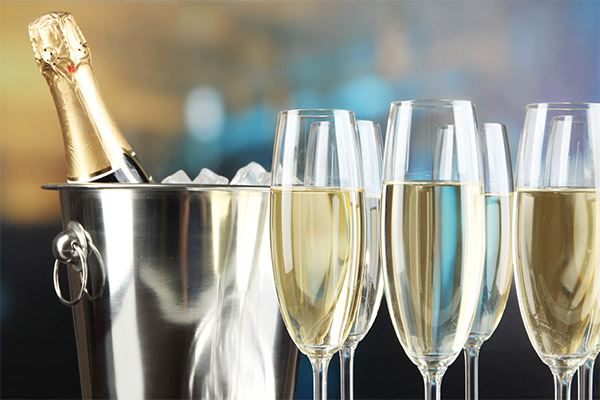
At diabetes mellitus
Specialists warn that sparkling wines should not be consumed by people with diabetes. The drink affects the work of the pancreas and kidneys, disturbing the hormonal balance. If blood sugar levels are unstable or elevated, drinking champagne can lead to dehydration, skin deterioration, headaches, loss of consciousness and malaise.
Important: Champagne has a glycemic index of 0 to 15 units.
Pancreatitis
Do not drink sparkling wines with pancreatic disorders. The components of the drink stimulate the excessive production of digestive enzymes, which may lead to an exacerbation of the disease.
When gastritis
When the gastric mucosa is irritated, it is advisable to refrain from sparkling wines in order not to provoke heartburn and violation of the acid-alkaline balance in the stomach.
If you have gout
Increased levels of uric acid in the body implies a specific diet and refusal of alcohol at the risk of exacerbation of the disease and strong side effects.
White wines and champagne are considered relatively safe drinks in gout because of the reduced content of ethyl alcohol and the antioxidant effect. At the same time, it is recommended to combine the booze with dishes of greens and other foods that reduce the amount of purines.
If a patient with gout has difficulty giving up alcohol on holidays, doctors recommend choosing homemade tinctures (for example, from rose hips) and light wine, in extreme cases - champagne.
In cholecystitis
If a person has choleretic disorders and a tendency to stone formation, champagne should be refused. The drink can cause nausea, vomiting, painful attacks and digestive disorders.
Champagne in cosmetology
There are luxury cosmetic procedures for rejuvenation using expensive varieties of champagne. The whole secret of the drink's miraculous effect is in the antioxidants and vitamins in its composition, and they are present only in qualitative and properly ripened raw materials.
There is a myth about champagne baths as an attribute of luxury and glamour. There is some truth in them: champagne is added to baths with other useful components, but more often used for compresses and wraps so as not to overspend the expensive product.
A small amount applied to the skin and allowed to stand for some time, is enough to stimulate the production of collagen, saturate the cells with moisture, produce an antioxidant effect, eliminate breakdown products, cleanse and rejuvenate tissues, tighten the contours of the figure and increase the elasticity of the skin, removing traces of stress and fatigue.
Harms and contraindications
Alcohol with low alcohol content is insidious because it is drunk a lot. In this case, ethanol compounds accumulate in the body, destroying the internal cells of the organs. First of all, champagne is harmful to the liver, and in addition, it can affect blood vessels, leading to heart ailments and severe headaches.
From a large amount of drinking and mixing drinks can manifest a severe hangover syndrome with nausea, headache, vestibular disorders, severe intestinal gas and flatulence, impaired appetite and mood.
Champagne affects the body in different ways. For some people with a sensitive nervous system it causes apathy, depressive mood, nervous breakdowns, attention deficit and memory lapses.
Sparkling wine as a low-alcohol beverage is often offered at holidays to pregnant women and children, believing that such alcohol will not bring much harm. In fact, it releases a sufficient amount of ethylene, which is harmful to children's bodies. The consumption of champagne during pregnancy can lead to severe toxicity, malaise, and impaired fetal development. In children it can cause poisoning and alcohol dependence.
Also, champagne should not be actively consumed under these conditions:
- depression, nervous disorders;
- lactation period;
- Digestive disorders, pancreatitis, cholecystitis, cirrhosis or liver fibrosis;
- Gastritis, colitis, hemorrhoids.
If there are other serious illnesses, it is necessary to consult a doctor about the possibility of drinking sparkling wine and its doses.
How to choose and store sparkling wine
Quality sparkling wine is always sold in glass bottles with a cork sleeve. It is definitely worth paying attention to the bubbles - they should be small and barely visible, about the same size. If you can see bubbles in the bottle as in mineral water, the product has been artificially carbonated and is far from high class.
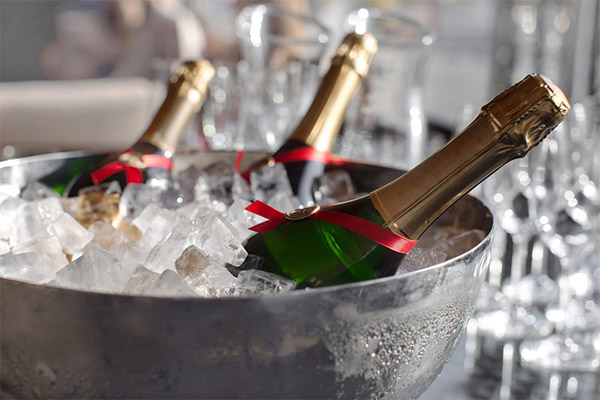
A good sparkling wine can't be priced too low, and it must have a quality label on the packaging.
Champagne is stored in corked bottles in a slanted position, so that the cork is always moistened. When the sleeve dries out, micro holes can appear, which cause the sparkling wine to be exhausted, and the dry cork can also crumble when opened. Drinks closed with plastic caps are considered low-grade.
Opened bottles should be kept corked in the refrigerator for no more than two days. Do not freeze the product.
What to do if the champagne has frozen in the freezer
If champagne is frozen, it should never be heated or subjected to temperature changes. Not only might the cork fly out, but the bottle might burst. To eliminate the ice, the closed bottle is placed in cold water, this will avoid the rapid expansion of materials. When the drink is liquid again, it can be consumed or the bottle can be placed in a refrigerated compartment with a low plus temperature.
How to open champagne if the cork is broken
One simple and effective way to gently open champagne is to lightly heat the area around the cork. It is enough to bring a candle or a lighter to the glass, as a result the neck will expand a little - and the cork will gently pop out. You have to be ready to catch the sleeve, and before heating you should never shake the bottle, so as not to provoke a shot and an abundance of foam.
If this method does not help, you can always turn to a corkscrew.
A bottle with a full cork is opened slowly, with a careful rotating motion, tilted sideways. To avoid foaming, you also pour the champagne at a 45-degree angle, turning the bottle a little, letting the air go down the neck so that the liquid doesn't "pop" out in a rush.
If the cork is broken, you can rub the bottle to get it knocked out.
How to make champagne from birch sap
Surprisingly, you can make your own champagne. According to this interesting recipe, you can make a gentle and light drink from birch juice.
Ingredients:
- 1 liter of birch juice (fresh or canned);
- 0.5 g of citric acid - it is needed not only for taste, but also for storage time;
- 200 g of sugar;
- 10 g of dark honey for color (optional);
- Wine yeast or raisin yeast.
The home-made sparkling is made in the following way:
- The juice must be filtered from impurities and sediment, mixed with sugar and citric acid in an enameled container.
- Bring the mixture to the boil over low heat and remove the foam, so that there is no sediment in the sparkling. After that, boil the liquid by a third - then the taste will be richer and more pleasant.
- After that, cool the liquid to room temperature, if necessary - filter it and enter the starter. Place the wort in a prepared container with a trap for fermentation, you can use a medical glove (emptying it with talc), which should be pierced a few holes to drain excess gas.
- Already in 10-12 hours the liquid will ferment. Store it in the shade in a room with a constant temperature of 18-22 °. Fermentation is finished in 3-4 weeks, when foam disappears from the surface, yeast precipitate falls out, and the liquid stops bubbling.
- The last stage is carbonation. To do this, mix the product obtained with 10 grams of sugar and pour into prepared clean bottles at 85-90%, leaving a gap, which is necessary to complete the fermentation process. Close the bottles tightly and store at room temperature for another 7-8 days, after which the sparkling is ready.
The bottle should be kept in a basement or cellar, but you can leave it in the fridge. The shelf life of homemade sparkling wines is not more than 6 months.
The light drink is balanced in flavor, it's great for dessert and main table and will appeal to anyone who doesn't like strong alcohol.
How to drink champagne correctly
The culture of drinking is an important part of taking alcohol. Only if you follow the etiquette that has existed for centuries and is being perfected by modern connoisseurs can you truly enjoy this unusual drink, discover its delicate flavor and benefit your body.
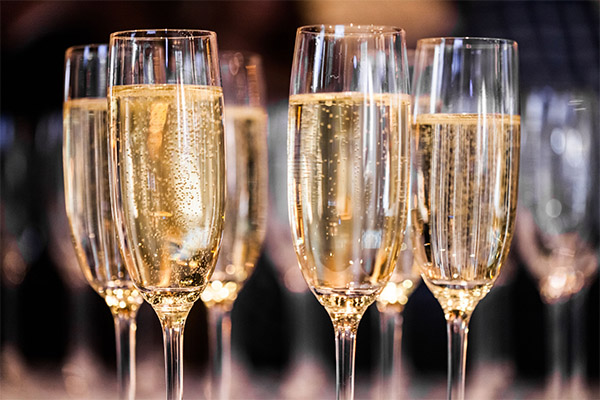
Champagne is drunk from crystal glasses. Dessert wines are usually drunk from wide cocktail glasses, while dry and semi-sweet wines are drunk from tall and narrow ones. Such glassware doesn't let the bubbles evaporate and allows you to savor the drink in small sips.
It is allowed to drink every day.
Doctors strongly recommend avoiding drinking alcohol regularly to prevent addiction. An addiction develops even when drinking weak drinks in minimal amounts simply because of the constant flow of alcohol into the bloodstream.
Useful tinctures or wines allow you to drink no more than 2 times a week in reasonable doses. As for champagne - it is undesirable to be fond of sparkling, so as not to provoke health problems. You can drink a fermented drink once a week, 2 glasses, without any visible harm. If you had several celebrations in one week - in the next 2-3 months you should give up drinking alcohol to cleanse the body.
What can you drink champagne with?
A tasty spicy drink is usually supplemented with aphrodisiac desserts - strawberries with cream, chocolate, ice cream brulee, pineapple, fruit assortment with nuts. But you can also drink champagne at the table. It goes perfectly with white poultry, fish, seafood, fresh vegetable salads, cheese, julienne, French soup and even some Italian dishes.
Can you drink champagne after beer and wine?
As is known, to combine different alcoholic beverages during a feast is very dangerous for the body. In such situations, it is recommended only to increase the degree, but not vice versa.
As for champagne, there is a separate warning. The drink often causes headaches and hangovers when drinking it heavily or combined with other alcohol. It is best to refrain from combining different drinks.
You should not combine champagne with fortified, red wines and beers, it can cause problems with blood pressure and kidneys, as well as nausea and severe malaise. As a last resort, after sparkling wine switch to martini, cognac or port, avoiding cereal-based drinks.
The best champagne: a rating
Among the sweet sparkling wines of the inexpensive category in Russia, the Italian Bellavita La Marchesina is considered good - up to 500 rubles. and Canti Cuvee Dolce - 600 rubles per bottle.
Of the expensive samples, you can pay attention to Cinzano Asti Spumante and Asti Martini, which are considered excellent (at 9 out of 10 points).
Among the semi-sweet affordable sparkling wines, the Russian variants Lev Golitsyn and Chateau Tamagne stand out - they receive 6 points each, which is equivalent to a "decent" rating.
In the more expensive segment there are Lambrusco Grasparossa di Castelvetro from Italy and Novy Svet Krymskoye - 800-900 rubles per bottle.
The best dry sparkling wine from Italy in Russia is Casa Defra Prosecco.
Interesting facts about champagne
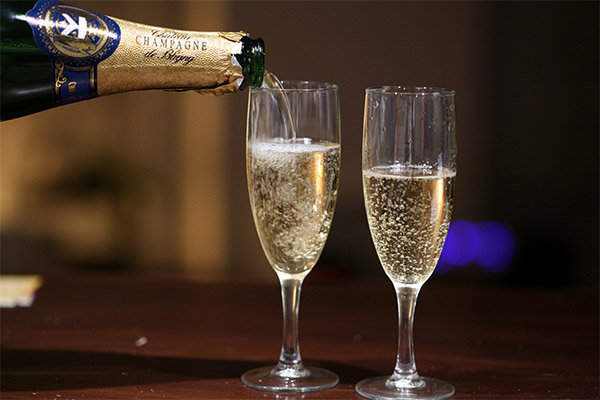
- The pressure inside the champagne bottle is equal to the pressure in the tire of a London double-decker bus - more than 6 atmospheres.
- Glasses for sparkling wine are not rubbed with a towel at all for a dazzling shine, but to leave micro-particles of cellulose on their walls, thanks to which the delicious bubbles in the drink will be visible.
- The most expensive champagne in the world is Shipwrecked 1907 Heidsieck, which was found at the bottom of the sea in 1997. One bottle of exquisite alcohol costs almost 300 thousand dollars, and only aristocratic families can afford such luxury.
- The wire on a champagne bottle that secures the cork is called a muselet.
- World Champagne Day is celebrated on August 4, the date that the French have recorded as the day of discovery of the prized sparkling beverage. Its effects were at first considered incidental and undesirable, until it was appreciated by the monarchs.
If you like a festive light drink - you'd better spoil yourself once in a while with only quality samples. Then you'll get a real treat and won't harm your body.
«Important: All information on this site is provided solely for introductory purposes. Before applying any recommendations, please consult a health care professional. specialist. Neither the editors nor the authors are liable for any possible harm caused by materials."

